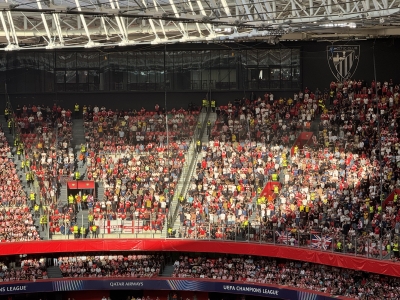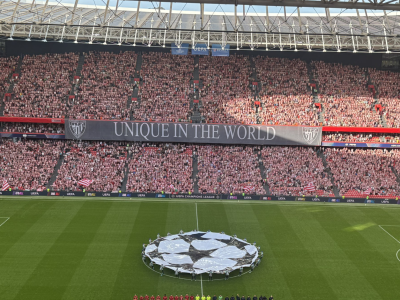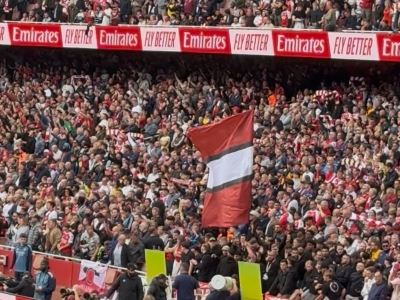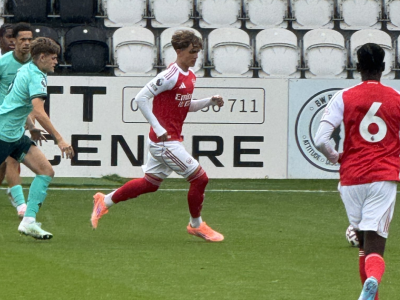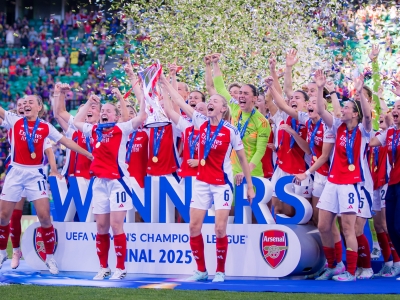Introduction
Following my recent series, ‘Understanding Arsenal Under Renée Slegers’, which explored the team’s attack, midfield, and defensive structures, this piece turns the lens specifically to pressing. So far, we’ve looked at Arsenal’s use of the ball, but we haven’t really examined the way they operate when they don’t have possession, and that aspect is equally important to Slegers’ system.
I wanted to consider it here in the context of a single, difficult fixture that ended 0-0, but I will be revisiting Slegers’ system on a monthly basis in a separate series, tracking how the attack, midfield, and defensive structures change — but also how Arsenal press and how that evolves.
In other words, I’ll be considering how the whole system develops month by month as the season progresses. You can expect the first piece in this series at the start of October, where I’ll look at Arsenal’s development across September’s fixtures.
Possession and early Patterns
Arsenal dominated possession against Manchester United with 57 per cent across the match, leaving the hosts with 43 per cent, but the early phases were defined by cautious probing from both sides. From kick-off, Alessia Russo and Stina Blackstenius pressed as a pair, attempting to force errors high up the pitch.
United’s immediate response was to bypass the press with long balls over the top, compelling Kim Little to contest an early aerial duel. The game initially settled into a slightly scrappy rhythm, with possession oscillating as United sought to build out from the back.
Pressing triggers and initial pressures
Arsenal’s pressing shape began with Blackstenius positioned high up the pitch as the lone forward, with Russo just behind her centrally, and Caitlin Foord and Olivia Smith occupying the wide channels next to Russo. Little operated either in line with them or slightly deeper, with Mariona Caldentey positioned ahead of Arsenal’s back four — Emily Fox, Steph Catley, Katie Reid, and Katie McCabe.
From the outset, Blackstenius pressed the centre-back on the ball, attempting to disrupt United’s initial build-up, while Foord applied pressure to the other centre-back.
Russo positioned herself intelligently between United midfielders Julia Zigiotti Olme and Hinata Miyazawa, cutting off potential central passing lanes and attempting to channel play wide. United’s back four consisted of Anna Sandberg, Dominique Jansson, Maya Le Tissier, and Celin Bizet, who often looked to build out from the back.
The not-so-effective press, specifically from Arsenal’s midfielders, allowed players like Bizet, Zigiotti Olme, and even Ella Toone and Jess Park to have time on the ball, enabling United to create some dangerous chances from the outset. However, Arsenal’s defensive alertness, particularly Daphne van Domselaar’s save and the subsequent quick clearance, prevented the opening goal and kept the game level.
Exploiting wide play and transitional moments
Arsenal’s press was most effective when United attempted to progress through the wide channels. McCabe worked to pressure Bizet, while Caldentey began tracking Park, cutting out passing lanes and reducing the time United had on the ball. Russo’s pressure between Zigiotti and Miyazawa continued to disrupt central progression, forcing the ball into less dangerous areas.
However, Arsenal occasionally allowed Toone too much freedom, and United’s pass-and-move dynamics could stretch Arsenal and create chances.
When United played the ball to Sandberg in the wide position, Toone would follow to support, and a mix-up at the back between Emily Fox and Kim Little allowed space for link-up play between Sandberg, Toone, and Fridolina Rolfö, creating dangerous opportunities for United. In these moments, Arsenal’s defensive interventions and recovery tackles had to be spot-on to regain control.
Pressing structure
Arsenal adopted a 4-1-4-1 structure with Blackstenius positioned as the advanced outlet, Russo, Caldentey, Foord, and Smith forming the midfield line, Little as the pivot, and the back four providing cover.
The press intensified when Arsenal pushed higher; Blackstenius applied pressure to Phallon Tullis-Joyce, Smith engaged Sandberg, and Fox stepped up to cut off Toone’s advancing runs.
Frida Maanum, Chloe Kelly, and Taylor Hinds were introduced later in the match and slot into the same pressing framework. These coordinated actions frequently forced rushed long passes, which Little often intercepted, turning defense into attack.
The press also generated opportunities further up the pitch. Blackstenius’ pressure on Janssen resulted in a turnover that played Russo through for a shot on target, highlighting how forward pressing could translate directly into scoring chances. By the end of the first half, Arsenal had successfully disrupted United’s rhythm multiple times, winning possession in midfield and forcing hurried clearances.
Adjustments and second-half trends
Around the 60-minute mark, United began to exploit emerging spaces as Arsenal’s press slightly lost cohesion. Fouls were committed to slow their progression, and Slegers made substitutions — Maanum, Kelly, and Hinds replaced Blackstenius, McCabe, and Smith.
The personnel changes did not alter the pressing structure: Russo assumed Blackstenius’ pressing responsibilities, Maanum took on Russo’s role, Kelly covered Smith’s duties, and Hinds slotted in for McCabe. The system remained intact, demonstrating Slegers’ emphasis on maintaining structural consistency even with rotated players.
As the second half progressed, Arsenal regained greater control of possession, reasserting their dominance and continuing to disrupt United’s attempts to build through midfield or wide channels. The high press, combined with intelligent mid-block positioning, forced United into reactive play, highlighting both the system’s design and the players’ understanding of triggers and spaces.
Key takeaways
The Manchester United fixture offered a clear view of Arsenal’s pressing identity in action. Success was most apparent when the press was triggered aggressively in wide areas or when central players like Russo, Foord, and Blackstenius engaged in coordinated duels.
Slight vulnerabilities appeared when United allowed players like Toone or Jess Park too much freedom, and when they utilised their pass-and-move dynamics to double up on Arsenal players, causing a temporary lack of coordination and communication. United did create a few opportunities to get shots away, but they were unable to capitalise, underlining how effective Arsenal’s defensive organisation and awareness were throughout the match.
Crucially, the system’s flexibility allowed substitutions without compromising structure, ensuring that pressing remained effective throughout.
Conclusion
Ultimately, Arsenal’s match against Manchester United reinforced the principles of Slegers’ system: coordinated triggers, high-intensity duels, and structural intelligence across the backline and midfield. The team’s ability to execute the press consistently, even under pressure, underscores the maturity of their collective defensive identity and provides a blueprint for the season ahead.



